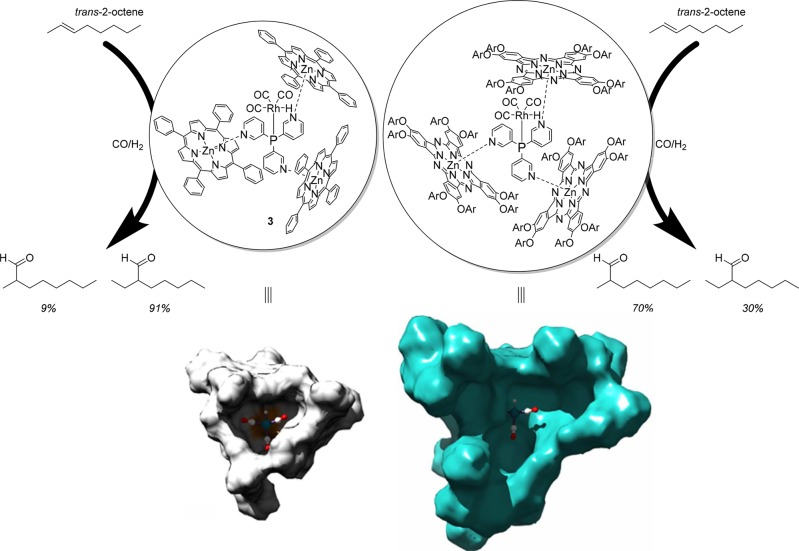Figure 5.
Product selectivity in the hydroformylation of trans-2-octene can be controlled by changing only the cavity size of the capsule, which can be modified using different building blocks for the assembly of the catalyst: space-filling models of rhodium catalyst 3 (left, DFT calculated structure) and the catalyst based on phthallocyanin building block 7 (right, DFT calculated structure) showing that the cavity size around the rhodium atom is 5 times larger.

